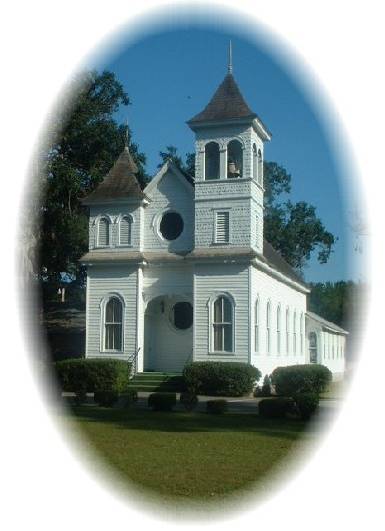
History of Euhaw Baptist Church
Euhaw has a long and proud history.
Dissenters who came from Scotland with the Cardross Expedition in 1684
formed it. After being burned out
of their settlement near Port Royal by the Spaniards in 1686, they settled at
Edisto Island and began to worship there. The
Edisto settlement was composed mostly of Presbyterians and Anabaptists. They worshiped in the same building until the Anabaptists
were chased out by the Presbyterians in the early 1720s. By 1726 they built their own sanctuary and had “glebe”
lands of approximately 100 acres. They
had also employed their own minister, Rev. William Fry.
During
this period they maintained that they were a “branch” of the church at
Charles Town, which was started about the same time as Euhaw at the settlement
of Summerton, near the point where Pinopolis is located today.
They later moved to Charles Town. This
attachment was maintained in order to have a place to retreat if attacked again
by the Spaniards or Indians.
Land of the Euhaws
In
the 1730s, the Baptists began a migration from Edisto to the “Land of the
Euhaws”, some at St. Helena’s Island, some at Port Royal and some at Hilton
Head. However, the majority settled
in the “Land of the Euhaws” around the headwaters of Boyd’s Creek.
They resumed worship there and by 1750, had erected a sanctuary, a
school, and a vestry on land donated by Francis Pelot.
The
new stagecoach road ran right in front of the sanctuary.
An Indian “long house” still stood across the road from the church.
Francis Pelot, formerly a Presbyterian, was baptized and hired as
minister on the same day, May 18, 1746. He
served well for 28 years, an all time record for Euhaw.
The Boyd Creek site served the congregation for 107 years when they
elected to move their place of worship to Grahamville.
Relocating to
Grahamville
Almost
immediately after the new sanctuary was completed in Grahamville, the Civil War
began and with men off to war, worship was suspended. Union troops set fire to the new building but enough of it
was left to restore. However, it
burned as a result of a forest fire in 1904.
The old sanctuary that stands today was built in 1905 and is still used
at times. The new sanctuary was
erected in 1985.
Euhaw
is the mother church to many area churches.
Her influence was particularly great in the formative years of the
Southern Baptist. William B.
Johnson, who later became the first president of the Southern Baptist
Convention, was ordained at Euhaw and served as its minister for three years.
Charleston
and Euhaw are the “roots” of the Southern Baptist Association of churches.
But the die was cast when Grahamvillians rejected the plan for the
railroad to be constructed through town.
Gopher Hill, and later Ridgeland, developed around the new railroad
station. Grahamville never fully
recovered from the Civil War and Euhaw became destined to be a rural church.
Euhaw
Celebrates 250 Years
The
doctors, lawyers, plantation owners, and businessmen never returned.
However, Euhaw has persevered and on November 18, 1995 members and
friends joined in a celebration of 250 years of service to our Lord as an
independent church.
That
initial band of worshipers who joined together in praise and thanksgiving on
Edisto Island over 320 years ago with names like Grimball, Parmenter, Fry,
Mikell, Sealy, Elliot, Sheppard, Odingsell, and their families, laid the
foundation for the congregation that we’ve called Euhaw Baptist Church.
Although
we have a storied past, the future is, and should be, our main concern.
Our mission is to serve the Lord where we are today, both individually
and collectively.
Written
by Wofford Malphrus